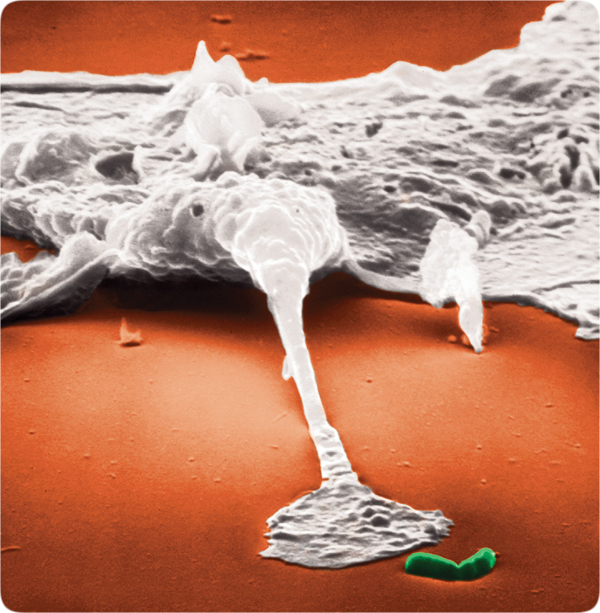Genetic Information 2
Even if matter and life (perhaps a bacterium) somehow arose, the probability that mutations and natural selection produced this vast amount of information is essentially zero (b). It would be similar to producing 4,000 books with the following procedure (c):
a. Start with a meaningful phrase.
b. Retype it, but make some errors and insert a few letters.
c. See if the new phrase is meaningful.
d. If it is, replace the original phrase with it.
e. Return to step “b.”
b. “Biochemical systems are exceedingly complex, so much so that the chance of their being formed through random shufflings of simple organic molecules is exceedingly minute, to a point indeed where it is insensibly different from zero.” Hoyle and Wickramasinghe, p. 3
“No matter how large the environment one considers, life cannot have had a random beginning. Troops of monkeys thundering away at random on typewriters could not produce the works of Shakespeare, for the practical reason that the whole observable universe is not large enough to contain the necessary monkey hordes, the necessary typewriters, and certainly the waste paper baskets required for the deposition of wrong attempts. The same is true for living material.” Ibid., p. 148.
Not mentioned by Hoyle and Wickramasinghe is the simple fact that even a few correct words typed by the hordes of monkeys would decay long before a complete sentence of Shakespeare was completed. Correspondingly, a few correct sequences of amino acids would decay long before a complete protein was completed, not to mention all the thousands of proteins that must be in their proper place in order to have a living cell (minus, of course, its DNA).
“From the beginning of this book we have emphasized the enormous information content of even the simplest living systems. The information cannot in our view be generated by what are often called ‘natural’ processes, as for instance through meteorological and chemical processes occurring at the surface of a lifeless planet. As well as a suitable physical and chemical environment, a large initial store of information was also needed. We have argued that the requisite information came from an ‘intelligence’, the beckoning spectre.” Ibid., p. 150.
“Once we see, however, that the probability of life originating at random is so utterly minuscule as to make the random concept absurd, it becomes sensible to think that the favourable properties of physics on which life depends are in every respect deliberate.” Ibid., p. 141.
Hoyle and Wickramasinghe go on to say that our own intelligences must reflect some sort of vastly superior intelligence, “even to the extreme idealized limit of God.” They believe life was created by some intelligence somewhere in outer space and later was transported to Earth. [emphasis in original] Ibid., p. 144.
“All point mutations that have been studied on the molecular level turn out to reduce the genetic information and not to increase it.” Lee Spetner, Not by Chance (Brooklyn, New York: The Judaica Press, Inc., 1996), p. 138.
c. Murray Eden, as reported in “Heresy in the Halls of Biology: Mathematicians Question Darwinism,” Scientific Research, November 1967, p. 64.
“It is our contention that if ‘random’ is given a serious and crucial interpretation from a probabilistic point of view, the randomness postulate is highly implausible and that an adequate scientific theory of evolution must await the discovery and elucidation of new natural laws—physical, physico-chemical, and biological.” Murray Eden, “Inadequacies of Neo-Darwinian Evolution as a Scientific Theory,” Mathematical Challenges to the Neo-Darwinian Interpretation of Evolution, editors Paul S. Moorhead and Martin M. Kaplan, June 1967, p. 109.
[From “In the Beginning” by Walt Brown]

